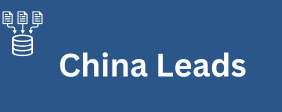Email Blasts Target Audience: Beginners, likely small business owners or individuals, who want to send group emails using Outlook.
Writing Level: Class 7 (simple language, clear explanations, short sentences).
SEO Focus: Keywords like “email blast Outlook,” “group email Outlook,” “send bulk email Outlook,” “Outlook mailing list,” “email marketing Outlook.”
Word Count Goal: ~2500 words (this outline will provide the structure for you to fill in the content to reach this goal).
Image Concepts:
- Image 1 Concept: A simple, clear screenshot of the “New Email” window in Outlook with the “To,” “Cc,” and “Bcc” fields highlighted, perhaps with a visual cue pointing to “Bcc” for privacy.
- Image 2 Concept: A simple flowchart showing the steps: “Prepare List” -> “Create Email” -> “Send” -> “Track (Optional).”
Sending Big Emails: Your Guide to Email Blasts with Outlook Email Blasts
Have you ever needed to send the same email to many people at once? Maybe you want to tell all your customers about a new sale. Or perhaps you need to share important news with your entire team. This is often called an “email blast.” It db to data sending one email to a large group of people. Many people use Microsoft Outlook for their daily emails. Did you know you can also send email blasts using Outlook? It’s true! This guide will show you how. We will make it easy to understand. By the end, you will feel confident. You will be able to send your own email blasts.

H2: What is an Email Blast and Why Use Outlook?
An email blast is simply sending one message to many people. Think of it like shouting news from a mountain top. Everyone can hear you. In the digital world, it’s about reaching many inboxes. People use email blasts for many reasons. Businesses might send newsletters. They could announce new products. Schools might send updates to parents. Community groups might share event details. It’s a quick way to share information widely.
Why use Outlook for this? Many people already have Outlook. It often comes with their computer. It is a familiar tool for most. You might already use it every day. This means you do not need new software. You do not need to learn a whole new program. Outlook can handle sending to many people. It has useful features for this task. It helps keep your contacts organized. Therefore, it’s a good choice for many. Especially for those new to sending group emails.
H3: Getting Ready: Your Contact List is Key
Before you send any email blast, you need a list. This list has all the email addresses. Think of it as your address book. Where do you get this list? You might already have it. Maybe it’s in a spreadsheet. It could be in your phone. Or it might be inside Outlook itself. This step is super important. A good list means your emails reach the right people. A bad list means wasted effort. So, take your time here. Make sure your list is correct.
There are different ways to get your contacts ready. You can type them one by one. This works for small groups. For larger groups, this is too slow. You can also import them. Outlook allows you to bring in lists. These lists can come from different places. We will talk about how to do this. Making sure your list is clean is vital. Remove old email addresses. Delete duplicate entries. This makes your email blast better. Furthermore, it helps avoid problems later on.
H4: Building Your Contact Groups in Outlook
Outlook has a great feature called “Contact Groups.” Some people call them “Distribution Lists.” These are like custom groups of people. Instead of typing each email address, you type the group name. It saves a lot of time. Imagine you often email your “Team A.” You can make a group for “Team A.” Then, when you send an email, you just type “Team A.” Outlook fills in all the email addresses for you. It’s very convenient for regular blasts.
To make a new Contact Group, you open Outlook
Go to “People” or “Contacts.” Then, look for “New Contact Group.” Give your group a clear name. Something like “My Customers” or “Newsletter Subscribers.” After that, you add members. You can pick contacts from your address book. You can also type in new email addresses directly. Save your group when you are done. This group is now ready to use. It makes sending blasts simple. Moreover, it keeps things tidy.
H5: Importing Contacts: Bringing Your Lists to Outlook
What if your contacts are in a file? Maybe you have an Excel spreadsheet. Or a CSV file. CSV stands for “Comma Separated Values.” These files are common for contact lists. Outlook can usually bring these lists in. This is called “importing.” It saves you from typing everything. First, open Outlook. Then go to “File” at the top. Look for “Open & Export.” After that, choose “Import/Export.” A new window will pop up.
This window guides you through the steps
You will choose “Import from another program or file.” Then, pick your file type. Most often, it’s a CSV file. You will need to find your file on your computer. Make sure your file has clear headings. For example, “Name,” “Email Address.” This helps Outlook understand your data. Match your file’s columns to Outlook’s fields. Finally, finish the import process. Check a few contacts to be sure. This makes your big list ready to go. Thus, you avoid manual data entry.
H6: The Power of Bcc: Protecting Privacy in Your Email Blasts
When you send an email blast, privacy is angola lists important. You do not want everyone to see each other’s email addresses. This is where “Bcc” comes in. Bcc stands for “Blind Carbon Copy.” When you put email addresses in the Bcc field, no one can see them. Each person only sees their own email address. They also see your email address. This keeps everyone’s information private. It is a crucial step for email blasts. Always use Bcc for group emails.
If you put addresses in “To” or “Cc,” everyone sees them
This can be a problem. It can lead to spam. It can even be against privacy rules. So, remember this rule: “To” for the main recipient, “Cc” for the methods of torture most commonly who needs to know, and “Bcc” for everyone else in a group email. To find the Bcc field in Outlook, you might need to click “Options” or “Show Bcc.” It might not be visible at first. Make sure it is there before you send. Using Bcc wisely is a sign of good email manners. Therefore, always use it for large groups.
